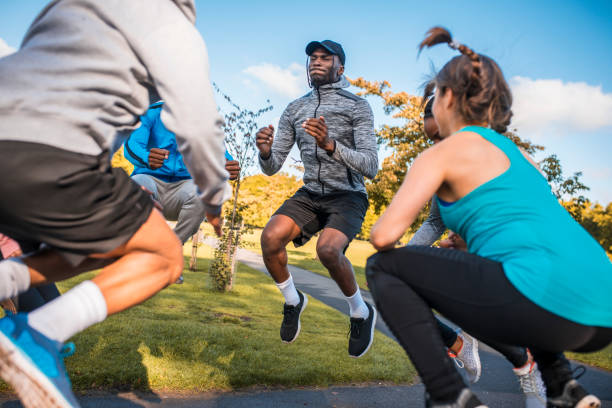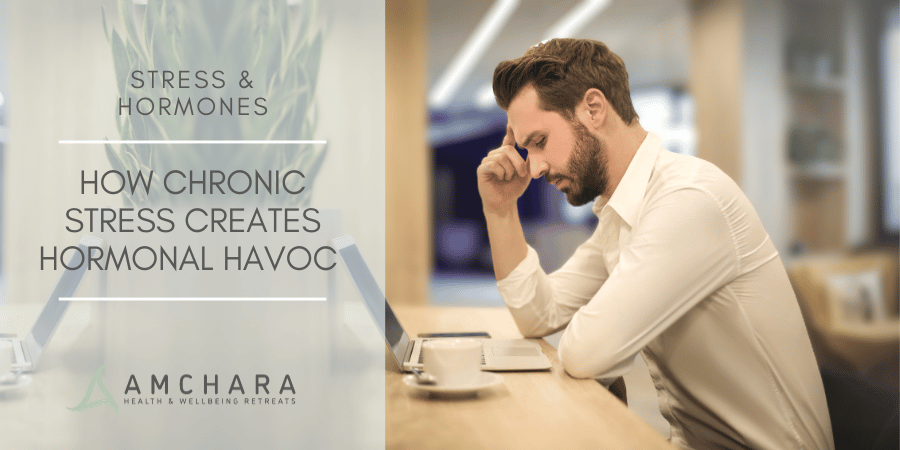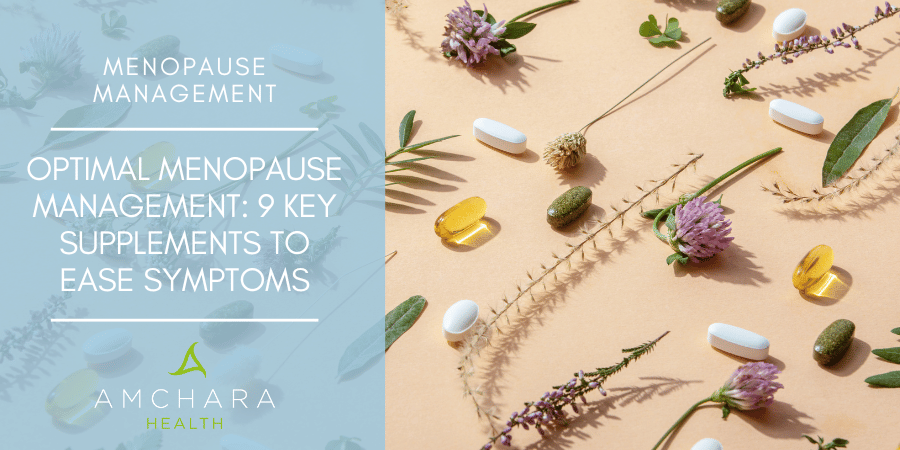Although there are many factors that influence hormone balance in your body, one of the most effective solutions for maintaining equilibrium is consistent and regular physical activity.
It may seem too good to be true but actually it’s not. Hundreds of research papers demonstrate the benefits of regular exercise.
It has been shown time and time again to improve health and add years to your life.
Article Index:
What the research says
What many of the studies have revealed is that long term exercise improves fitness levels, reduces body weight, increases insulin sensitivity and increases resting levels of the protein hormone adiponectin, which plays a crucial role in energy metabolism.
Studies show that reduced levels of adiponectin are linked to insulin resistance, diabetes and metabolic syndrome.
Maintaining hormone balance with regular physical activity is therefore necessary to ensure adequate levels of adiponectin and thus improve insulin sensitivity.
Even short-term exercise has been shown to improve insulin resistance and there is firm and consistent evidence that increased physical activity helps to reduce the incidence of type 2 diabetes.
Further research has identified that circulating levels of anabolic hormones such as dehydroepiandrosterone (DHEA) and insulin like growth factor (IGF-I) in older women are influenced by physical activity, muscle function, and aerobic effort.
The benefits of exercise on hormone balance is evident in men as well as women according to some studies which have found that physical activity has an impact on endocrine function in elderly men.
Results from this research suggest that a programme of regular moderate activity is linked to elevated levels of IGF-1 and DHEA hormone as well as with thyroid function.
DHEA is the most abundant steroid hormone.
It is produced in the adrenal glands and plays an important role in numerous metabolic functions as well as being responsible for producing other hormones such as oestrogen and testosterone.
Although DHEA is produced naturally in the body, it starts to decline with age so anything that can boost these levels will be beneficial for hormone balance.
IGF-1 has similar actions to insulin although not as powerful – it functions to promote growth but also helps to decrease blood glucose levels.
This may partly explain why exercise is positively associated with a lowered risk of diabetes.
The benefits of physical activity on thyroid hormone balance
It cannot be underestimated how important the thyroid gland is when it comes to overall good health.
The metabolism of every cell in the body is regulated by the thyroid gland which affects growth and development as well as digestive function, muscle control, mood, brain function and bone maintenance.
Much of the evidence to date identifies that exercise increases metabolism and improves thyroid function.
More intense aerobic exercise, especially in terms of cardiovascular exercise, greatly affects the levels of circulating thyroid hormones.
A study on exercise intensity and thyroid hormone levels found that as the intensity increased, thyroid stimulating hormone levels also continued to rise.
The benefits of physical activity on sex hormone balance
Many years of research have identified that high levels of the sex hormone oestrogen are one of the main risk factors for breast cancer and can also contribute to type 2 diabetes, abdominal obesity and metabolic syndrome.
Age related testosterone decline in men can also lead to hormone imbalances that result in health issues such as type 2 diabetes and depression.
Taking a holistic approach and focussing on factors that maintain hormone balance naturally is essential in terms of reducing the risk of life limiting or debilitating conditions.
According to studies high intensity resistance training has the most beneficial effect on testosterone levels in men.
It has also been found that at moderate levels of intensity, cardiovascular and resistance training has similar results on female sex hormones.
Physical activity should therefore be considered an important tool alongside other lifestyle changes when trying to maintain the balance of sex hormones.
The benefits of physical activity on obesity
The World Health Organisation defines obesity as an abnormal or excessive accumulation of body fat that presents a risk to health.
Obesity is associated with adverse health effects such as type 2 diabetes, cancer and cardiovascular disease.
There are many intrinsic physiological and biochemical factors that lead to obesity, however most experts agree that obesity is caused by a combination of overeating and a sedentary lifestyle.
Nevertheless some people do gain weight more easily than others and this can sometimes be caused by a hormonal imbalance, which may be the result of conditions such as hypothyroidism or Cushing’s disease.
The body of evidence on obesity is rapidly expanding and it is now recognised that fat cells produce a number of hormones such as adiponectin and leptin that are linked to appetite, energy metabolism and body weight.
Finding ways to maintain hormone balance is therefore vital for preventing unnecessary weight gain.
More recent research has identified that faulty genes also play a part in certain types of obesity.
On a positive note, researchers have found that a gene predisposing certain people to obesity can be blunted by physical activity, thus reinforcing the importance of exercise.
Studies on the types of exercise that maximise weight loss show that low intensity rather than high intensity exercise increases the body’s fat burning mechanisms.
Furthermore, low intensity training also results in less cortisol production (cortisol is a stress hormone) and therefore puts less stress on an already unbalanced endocrine system.
Bitesize exercise – Is it enough?
Hold fire before panicking about how and when you are going to fit in prolonged exercise sessions, apparently even small bouts of exercise that are broken up throughout the day can be beneficial.
One very large study, published in The Journal of the American Heart Association provided enlightening results on the effects of incremental bouts of physical activity amongst those aged 40 and over.
Data taken from a National Health and Nutrition Examination Survey between 2003 and 2006 revealed that the more exercise people did the less risk they had of dying during the six-year follow up period.
Whilst the study confirmed longer periods of exercise gave a far greater health benefit than shorter bouts it also identified that those benefits remained as valid if the exercise duration was broken up.
Even an accumulation of short bursts of activity throughout the day lowered the risk of dying.
So ultimately you may need to exercise a total of 100 minutes a day to cut your risk of dying by 75%, but you don’t have to do it all at once – great news for many people.
Find a type of exercise that’s right for you
As the old saying goes: “Horses for courses” – when it comes to maintaining a regular exercise regime you need to find something you like, that also suits your abilities and lifestyle.
There are 4 main types of exercise, but mixing and matching will give you greater benefits and leave you less likely to get bored and give up at the first hurdle!
Balance Exercises
Exercises that improve balance can help to prevent falls, which is a common occurrence amongst the elderly, especially as the systems that normally help us to maintain balance such as the inner ear, vision, leg muscles and joints stop working so well with age.
Building lower body strength can also improve your balance. The following exercise options are ideal for improving balance:
-
Standing on one foot – try this every day when you’re brushing your teeth
-
Heel-to-toe walk – do this during a break at work or while waiting at a bus stop
-
Tai Chi – you can find classes for this at many leisure/sports centres
Flexibility Exercises
Aging leads to a loss of flexibility in the tendons and muscles.
As the muscles shorten it affects your ability to function properly and may lead to cramps, pain, muscle damage, strains and joint pain.
Flexibility exercises are great for stretching your muscles and keeping your body limber. Increased flexibility will help to give you more freedom of movement during your day-to-day life and will enable you to try other exercises too.
A regular programme of stretching exercises will increase your range of movement and reduce the risk for injuries and aches and pains.
Try any of the following on a daily basis or at least 3 to 4 times a week.
-
Shoulder and upper arm stretch – easily done at home
-
Calf stretch – can be done anytime at work, at home or after walking
-
Yoga – no need to join a class, there are many yoga videos online or DVD’s you can buy
Endurance exercises
Often called aerobic exercise, this type of activity should get your heart pumping and make you a little out of breath.
Aerobic exercise is ideal for improving your heart health, lowering your blood pressure, reducing inflammation, lowering blood sugar levels, raising good (HDL) cholesterol levels and boosting your mood.
Building your endurance makes it much easier to carry out many daily activities and can take the effort out of climbing stairs or running for the bus.
In the long term aerobic exercises help to reduce your risk for heart disease, type 2 diabetes, depression, strokes and breast and colon cancer.
Any of the following aerobic exercises carried out for around 150 minutes per week will do you the world of good.
-
Brisk walking or jogging
-
Gardening (mowing, raking, digging)
-
Dancing
-
Swimming
-
Cycling
-
Marching in place
Strength Exercises
Muscle mass diminishes as we get older but strength training can help to re-build it.
A regular programme of strength training or resistance training will make your muscles stronger and give you the capability to carry out daily chores such as carrying heavy shopping or other heavy objects. As well as this it will enable you to stand up from the floor or a chair much more easily.
Strengthening your muscles can relieve joint and back pain and can also stimulate bone growth, improve your balance and posture, lower blood sugar and help with weight control. So any of the following are well worth the effort:
-
Lifting weights
-
Squats
-
Using a resistance band
-
Using your own body weight
Keeping fit, strong and flexible is a simple and easy way to correct hormone imbalances alongside a well balanced diet – so don’t waste time, start now!
Exercise Studies:
Hormone Related Stories:






